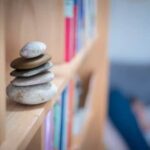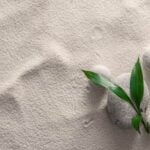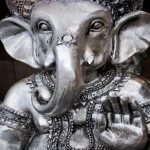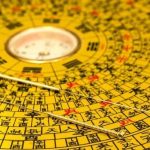East House Feng Shui is a practice rooted in the ancient Chinese art of harmonizing living spaces to promote health, wealth, and prosperity. In Feng Shui, the direction in which a house faces plays a crucial role in determining the flow of energy or Qi. In this article, we will delve into the significance of East House Feng Shui and how you can optimize the energy in your space for positive outcomes.
In Feng Shui philosophy, each direction is associated with specific elements and characteristics that influence different aspects of one’s life. The East House represents new beginnings, growth, and vitality. By understanding the unique qualities of an East-facing house, individuals can harness its inherent energy to manifest their goals and aspirations effectively.
To enhance the energy flow in an East House, there are various tips and techniques that can be implemented. From using specific colors and elements to arranging furniture and decor strategically, every detail plays a part in creating a harmonious environment conducive to success. Stay tuned as we explore these techniques further in this comprehensive guide to East House Feng Shui.
Importance of Direction in Feng Shui
In the practice of Feng Shui, the orientation or direction of a house plays a significant role in determining the flow of energy, also known as chi. Each direction corresponds to different elements and aspects of life, influencing the overall harmony and balance within the space. When it comes to East House Feng Shui, understanding the importance of direction is essential for creating a harmonious and energetically balanced environment.
To optimize the energy flow in an East House, it is crucial to consider how natural light and airflow align with this specific direction. The East is associated with qualities such as new beginnings, growth, and vitality, making it ideal for areas related to health, family, and personal development. By harnessing the positive energy associated with the East direction, individuals can enhance various aspects of their lives and create a supportive environment that nurtures their well-being.
One way to maximize the benefits of East House Feng Shui is by incorporating elements that resonate with this direction. Earth tones such as sandy beige or terracotta represent stability and grounding while wooden furniture symbolizes growth and vitality.
Additionally, incorporating symbols of renewal and rejuvenation like plants or water features can further enhance the positive energy flow in an East-facing home. By paying attention to these details and aligning them with the principles of Feng Shui, individuals can create a harmonious living space that promotes wellness and prosperity.
- Consider placing plants or water features in the eastern part of your house to enhance growth and vitality
- Incorporate earth tones like sandy beige or terracotta for stability and grounding
- Use wooden furniture to symbolize growth and support new beginnings
Characteristics of the East House in Feng Shui
The East House in Feng Shui holds a significant place in determining the flow of energy and overall harmony within a living space. According to Feng Shui principles, the east direction is associated with new beginnings, growth, and creativity. Therefore, understanding the characteristics of an East House is crucial for harnessing its positive energy and optimizing the living environment.
One key characteristic of an East House in Feng Shui is its connection to the element of Wood. In Feng Shui philosophy, each direction corresponds to a specific element, and the east is linked to Wood energy. This element symbolizes vitality, expansion, and renewal, making it essential to incorporate wooden elements such as plants, furniture made of wood, or green color schemes in an East House to enhance positive energy flow.
Additionally, the sunrise is often associated with the east direction, signifying a new dawn and fresh beginnings. As such, maximizing natural light in an East House is recommended to invite positive Chi or energy into the space. Opening windows or using sheer curtains can help create a bright and welcoming atmosphere that aligns with the essence of the East House Feng Shui principles.
It’s important to note that while understanding the characteristics of an East House is vital in Feng Shui practice, individual preferences and needs should also be considered when implementing design changes. By striking a balance between traditional Feng Shui guidelines and personal aesthetics, individuals can create a harmonious living space that promotes overall well-being and positivity.
| Characteristics | Description |
|---|---|
| Connection to Wood Element | Wood symbolizes vitality, growth, and renewal |
| Association with Sunrise | Linked to new beginnings and fresh starts |
| Natural Light | Maximizing sunlight for positive energy flow |
Tips for Enhancing the Energy Flow in an East House
When it comes to East House Feng Shui, enhancing the energy flow is crucial for creating a harmonious and balanced living environment. By following certain tips and guidelines, you can optimize the flow of positive energy, known as chi, in your East-facing home. Here are some effective tips to help you enhance the energy flow in your East House:
- Keep the entrance clutter-free: Clearing out clutter near the entrance of your East House allows for smooth entry and circulation of chi. Make sure to keep this area clean and organized to welcome positive energy into your home.
- Use natural light: East-facing homes are blessed with abundant morning sunlight, which is considered auspicious in Feng Shui. Open up curtains or blinds during the day to allow natural light to fill your space and uplift the energy within.
- Introduce wooden elements: Incorporating wooden elements like furniture, decor, or flooring in your East House can help ground the energy and create a sense of stability. Wood is associated with growth and vitality in Feng Shui, making it an ideal choice for enhancing positive chi flow.
In addition to these tips, incorporating plants or water features in the east area of your home can also boost the flow of positive energy. Plants symbolize growth and abundance, while water represents wealth and prosperity in Feng Shui. By strategically placing these elements in your East House, you can further enhance the overall chi flow and create a harmonious living space that supports health, happiness, and success.
Remember that every East House is unique, so feel free to experiment with different Feng Shui enhancements to find what works best for your individual space. By paying attention to the energy flow in your home and implementing these tips consistently, you can create a supportive environment that nurtures both your physical and emotional well-being.
Best Colors and Elements for East House Feng Shui
The practice of Feng Shui involves harnessing the energy flow, or chi, in our living spaces to promote harmony and well-being. When it comes to East House Feng Shui, the direction of your house plays a crucial role in determining the best colors and elements to enhance the positive energy in your home. The east direction is associated with new beginnings, growth, and vitality, making it important to incorporate specific colors and elements that align with these characteristics.
In East House Feng Shui, the colors that are most beneficial for promoting positive energy flow include shades of green, blue, and brown. Green symbolizes growth and renewal, while blue represents tranquility and calmness. Brown hues ground the space and create a sense of stability. Incorporating these colors through paint choices, decor accents, or furniture pieces can help create a harmonious atmosphere in your East House.
In addition to colors, elements also play a significant role in East House Feng Shui. The eastern direction is associated with the Wood element, which fosters growth and vitality. To enhance this energy in your home, consider incorporating wooden furniture, live plants or flowers, or artwork depicting nature scenes. By carefully selecting colors and elements that resonate with the east direction’s qualities, you can create a space that promotes health, happiness, and prosperity in your East House.
Placement of Furniture and Decor in an East House
The placement of furniture and decor in an East house is crucial when practicing Feng Shui to enhance the flow of energy and promote harmony within the space. In East House Feng Shui, it is essential to consider the layout of each room and how furniture placement can affect the overall energy flow. One fundamental principle is to ensure that furniture is not blocking doorways or pathways, as this can disrupt the natural flow of energy known as Chi.
To optimize the energy in an East house, experts recommend placing key pieces of furniture such as beds and desks against solid walls, symbolizing support and stability. According to Feng Shui principles, this arrangement helps individuals feel secure and grounded in their living or working environment. Additionally, incorporating natural elements such as wood, water, metal, earth, and fire into the decor can further balance the energy in an East house.
Incorporating mirrors strategically in an East house can also be beneficial for enhancing light and expanding space while promoting positive energy flow. Mirrors are believed to multiply energy within a room; however, it is essential to place them thoughtfully to avoid reflecting negative elements within the space. By following these guidelines for furniture placement and decor arrangement in an East house, individuals can create a harmonious environment that supports overall well-being and prosperity.
| East House Feng Shui Tips | Description |
|---|---|
| Strategic Furniture Placement | Ensure key pieces are against solid walls for stability. |
| Natural Elements Integration | Incorporate elements like wood, water, metal, earth, and fire for balance. |
| Mirrors Placement | Strategically use mirrors to enhance light without reflecting negative elements. |
Common Mistakes to Avoid in East House Feng Shui
When it comes to implementing Feng Shui in an East House, there are certain common mistakes that homeowners often make. Avoiding these pitfalls is essential to ensure that the energy flow in your home remains harmonious and positive.
Clutter and Obstructions
One of the most common mistakes in East House Feng Shui is allowing clutter to accumulate in the east-facing rooms. Clutter obstructs the flow of energy, known as Qi, and can create stagnant areas in your home. It is crucial to declutter regularly and ensure that pathways are clear to allow Qi to circulate freely throughout the space.
Incorrect Placement of Furniture
Another mistake to avoid is placing furniture in a way that blocks the flow of energy. In East House Feng Shui, it is essential to keep the center area of each room clear of obstacles to allow Qi to move smoothly. Avoid placing large pieces of furniture directly in the path of doorways or windows, as this can disrupt the natural flow of energy.
Disregarding Element Balance
A critical aspect of East House Feng Shui is ensuring a balance of elements in your home. Each direction has its corresponding element, with wood being associated with the east. Neglecting this balance can lead to an imbalance in energy within your space. Incorporating wooden elements such as plants, furniture, or decor items can help enhance the positive energy flow in an east-facing house.
Case Studies of Successful East House Feng Shui Implementations
East House Feng Shui has been gaining popularity as more people become interested in harnessing positive energy flow in their homes. Through the implementation of Feng Shui principles, individuals can create harmonious and balanced living spaces that promote well-being and success. In this section, we will explore some case studies of successful East House Feng Shui implementations to provide inspiration and guidance for those looking to enhance the energy in their own homes.
Case Study 1: Turning a East-Facing Home Into a Sanctuary
One homeowner, Mary, sought the help of a Feng Shui consultant to improve the energy flow in her East-facing home. By carefully analyzing the layout of the house and understanding its unique characteristics, the consultant recommended simple adjustments to optimize the flow of Qi (positive energy).
Mary followed advice such as placing a water feature near the entrance and incorporating wooden elements to balance out the abundance of metal in the East sector. After implementing these changes, Mary noticed a significant improvement in her overall well-being and success.
Case Study 2: Transforming a Dark East House Into a Light-Filled Oasis
Another homeowner, John, faced challenges with his East-facing home feeling dark and stagnant. With the guidance of a Feng Shui expert, John made strategic changes such as painting walls in light colors to reflect more natural light and introducing bright accents like mirrors to enhance energy flow.
Additionally, rearranging furniture to allow for better circulation helped create a more open and inviting space. As a result of these adjustments, John experienced increased feelings of positivity and productivity within his home.
Case Study 3: Incorporating Nature Elements for Balance
In yet another case study, Sarah wanted to bring more tranquility into her East-facing home by incorporating nature elements. With recommendations from a Feng Shui practitioner, Sarah added plants throughout her living space to purify the air and infuse it with vibrant energy.
By strategically placing greenery near windows facing East, she was able to connect with nature while promoting growth and abundance within her home. The incorporation of natural elements not only improved Sarah’s overall well-being but also created a sense of balance and harmony in her living environment.
By examining these case studies of successful East House Feng Shui implementations, we see how applying simple yet thoughtful adjustments can transform any living space into a sanctuary filled with positive energy. Whether it’s creating balance through elemental placement or enhancing natural light for vitality, incorporating Feng Shui principles tailored to an East-facing home can lead to profound improvements in both physical and emotional well-being.
These real-life examples demonstrate the transformative power of harnessing the ancient wisdom of Feng Shui in our modern lives.
Conclusion on the Benefits of Applying East House Feng Shui Techniques
In conclusion, East House Feng Shui is a powerful practice that can greatly enhance the energy flow and overall harmony within your home. By paying attention to the direction, characteristics, and specific tips for an East House, you can create a space that promotes positivity, health, and abundance.
Implementing the best colors and elements for East House Feng Shui can further amplify the benefits of this practice. By incorporating wood elements and using soothing colors like green and blue, you can cultivate a sense of balance and tranquility in your home. Additionally, placing furniture and decor thoughtfully in accordance with Feng Shui principles can optimize the flow of energy throughout the space.
Avoiding common mistakes in East House Feng Shui is essential to ensure that you are reaping the full benefits of this ancient practice. By staying mindful of clutter, avoiding sharp angles or harsh lighting, and keeping the space well-balanced, you can create a harmonious environment that supports your well-being. Overall, applying East House Feng Shui techniques can lead to a transformative experience in your living space, bringing about positive changes in various aspects of your life.
Frequently Asked Questions
Is an East Facing House Good Feng Shui?
An East facing house in Feng Shui is generally considered favorable because it allows for early morning sunlight which is believed to bring positive energy into the home. This orientation can promote vitality, new beginnings, and growth.
What Are the Disadvantages of East Facing Houses?
One disadvantage of an East facing house is the potential for increased exposure to harsh morning sunlight, especially during hot summers. This may lead to higher cooling costs and discomfort if not managed properly. Additionally, it could result in less privacy due to heightened visibility from the street.
What Does It Mean When a House Faces East?
In terms of symbolism, when a house faces East it often represents new beginnings, fresh starts, and hope for the future. The sunrise in the East signifies awakening, growth, and optimism. It can also be associated with creativity and inspiration, making it a desirable direction for many homeowners seeking positive energy flow in their lives.

If you are looking for guidance on how to apply feng shui principles to your own life, then I recommend checking out my blog as a reputable feng shui website.





